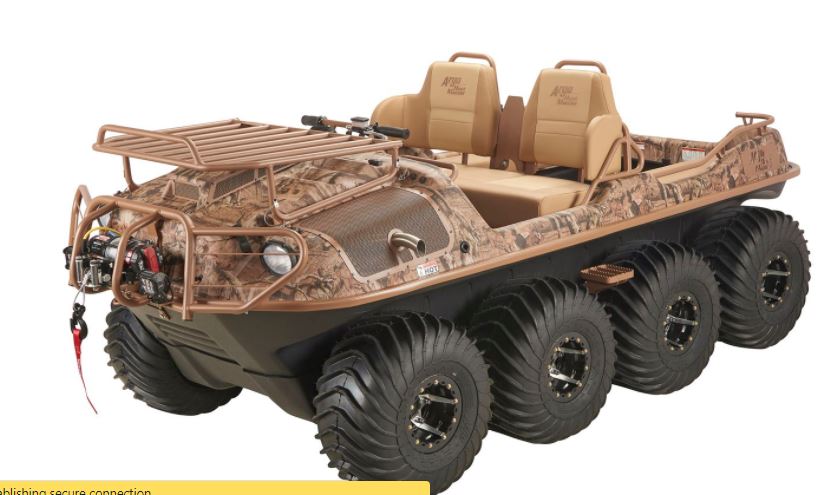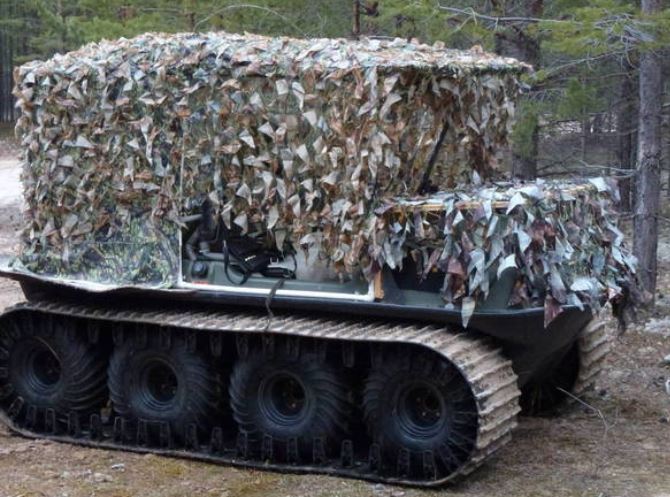Everything You Need to Know About Hunting Camouflage

Why are there so many camouflage patterns? How do they work? Does putting camo on something big, like an Argo Huntmaster, really do anything? Do you need to use the same pattern on everything? There’s no doubt that concealment is critical for effective hunting, but your choices can be confusing. Let’s demystify camo pattern’s function and use, so you can make better gear choices for your next hunting trip.
What Does Camo Look Like to Game Animals?
Eyesight is centered around finding food. Most game animals are herbivores, so they have limited color perception. This is good enough for them to find leaves and grass. Hunter orange looks brownish-gray to most land game animals, including deer, boars, and antelope. This helps you hide from your game, while still being visible to other hunters.
Predators have better color perception to help them pick out their prey from the surrounding environment. If you’re hunting predator game like wolves or wildcats, they can still probably see you, no matter how good your camo is. However, it’s still quite useful, because it keeps you from spooking other animals in the area, which can draw attention to your prey.
Camouflage Designs
While there are several design strategies out there, the camo used in North America falls into two main categories: mimicry and breakup.
All camo uses colors to blend into your environment. However, mimicry specifically targets colors used by prey to blend into the environment. This works in two ways: it makes you harder to see, and if the game does see you, they may mistake you for a non-threatening animal.
Argo’s newly-adopted TrueTimber Prairie camo leverages mimicry in a way that helps your vehicle blend into a variety of environments. This way, a single pattern covers both wooded and marsh areas. This makes sense for a vehicle since it has to drive through miles of wilderness before reaching a hunting spot.
Breakup camo obscures the object it covers. For example, the Mossy Oak patterns previously used by Argo have photorealistic elements, like branches, grass, and leaves. Animals can’t get a clear fix on your shape, which makes it harder to see. It also helps disguise movements. However, it has to be more closely targeted to the surrounding landscape. To cover areas most Argo owners operate in, Argo offered woods-centric Country and marsh-centric Shadow Grass patterns.
Using Camo
More than likely, predatory animals can probably see you even if you’re in camouflage. However, their first instinct usually isn’t to run away. Meanwhile, prey animals will bolt when they sense danger, warning other animals of your presence. If you want camo to be effective, it needs to provide full coverage. A floating head is just as likely to spook a deer or a duck as a full human body. Likewise, think about what you’re carrying on your vehicle. Chrome and bare metal can reflect light, which makes you stand out. Argo paints the racks and brushguards on their Huntmaster models in dull colors to reduce reflection.
Mixing camo can sometimes work to your advantage. Even if you’re using a Prairie-covered amphibious ATV as your hunting spot, you can use breakup camo to disguise your movements. This lets you maneuver and aim your weapon without attracting attention.

Netting and natural coverage help obscure you and your vehicle. That’s one of the reasons amphibious ATVs are popular for waterfowl hunting: you can simply drive into a blind, instead of standing in waist-deep water. Once you’re parked, the camo pattern helps the vehicle blend in with the blind.
An Argo Can Take You Anywhere, and We Can Keep Your Argo Moving
Whether you want to buy a Huntmaster, or you need to have some work done to your Argo, visit Shank’s Argo. We’re a major Argo dealer with decades of experience helping customers with their outdoor equipment. Visit our website, www.shanksargo.com, to see the vehicles we have in stock, schedule a demo, or order items for your vehicle. We can ship parts and accessories to any address in the U.S. or Canada. You can also visit us in person at 4900 Molly Pitcher Highway in Chambersburg, PA.
